As the dust free environment ban for me continues I needed a project today to keep me building for the short term but without sanding etc. Looking ahead for my build I decided to try my hand at making trunnels (treenails) for the first time.
I initially split lengths of bamboo skewers and pulled pieces through a drawplate, but what a tedious chore that was with multiple splinters in my fingers. Then I tried a method Bernard Frolich suggests in his book “The Art of Ship Modeling”. An interesting method but I couldn’t see the tiny “wedges” too well plus they were not consistent. Then on to a variation of another method I had seen, on different model making sites, using a sharpened syringe needle in a drill press.
I hunted around my little work space and found a hollow but blunt glue “needle” I have had for years.
View attachment 273212
View attachment 273214View attachment 273215
I sharpened the end a little and using a small hammer drove the needle carefully into pine end grain. It went in straight and looked like it might work. The photo sequence shows the method I used - hit it with a hammer

. Well gentle taps really but it drove in solidly.
View attachment 273220View attachment 273221
Lots of trial and error and eventually I found a depth I could drive the needle into the end grain without bending the shaft. I marked the needle with masking tape as a depth stop because I needed to know where to the cut the block on the bandsaw. When I used the bandsaw I covered the end of the block of wood with tape to stop the trunnels disappearing into the lower reaches of the bandsaw bilges.
View attachment 273222
I think the photos are self explanatory, I can get about three trunnels from each piece of wood so in this case I get about 240 or so when I cut them. They measure at about 2” diameter real size, which I think is realistic. I have yet to stain and practice on a piece of spare hull planking to see the outcome. If it doesn’t work then at least it was a fun experiment.
View attachment 273223View attachment 273224View attachment 273225View attachment 273226View attachment 273227
I have another eye surgery on the other eye soon so again it’s slow delayed frustrating progress for a few weeks.
I keep saying “aye aye” to my wife but she doesn’t think it funny

.







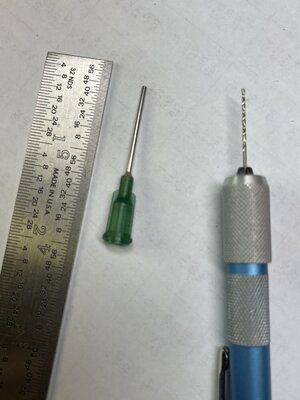
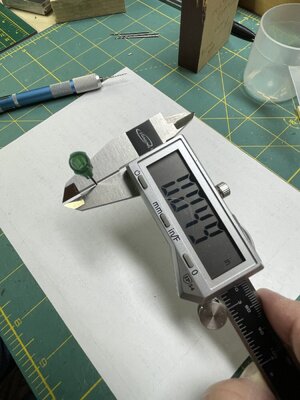
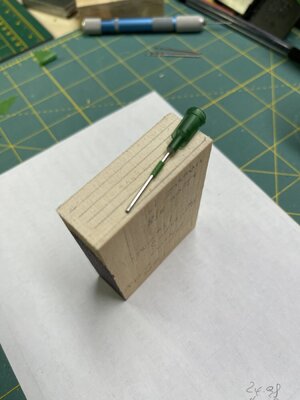
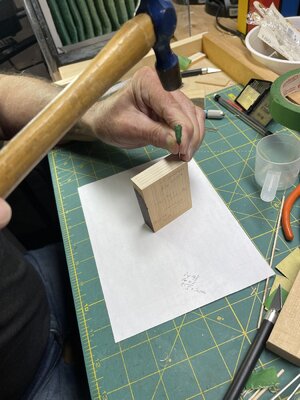

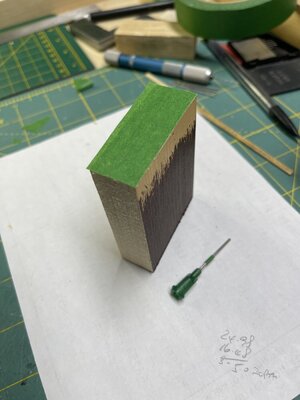


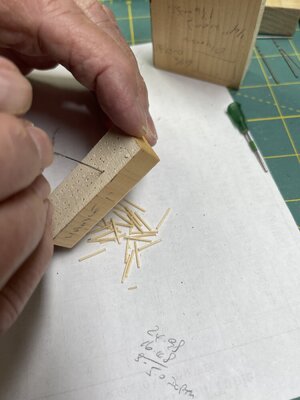
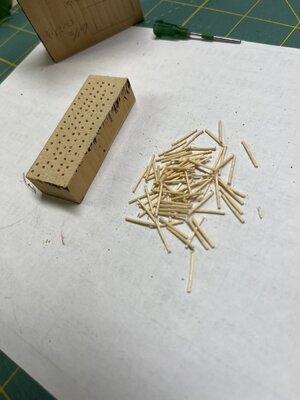
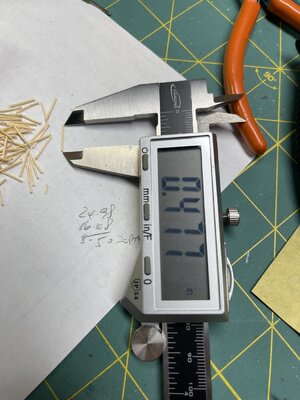
 .All the best with your next surgery.
.All the best with your next surgery.